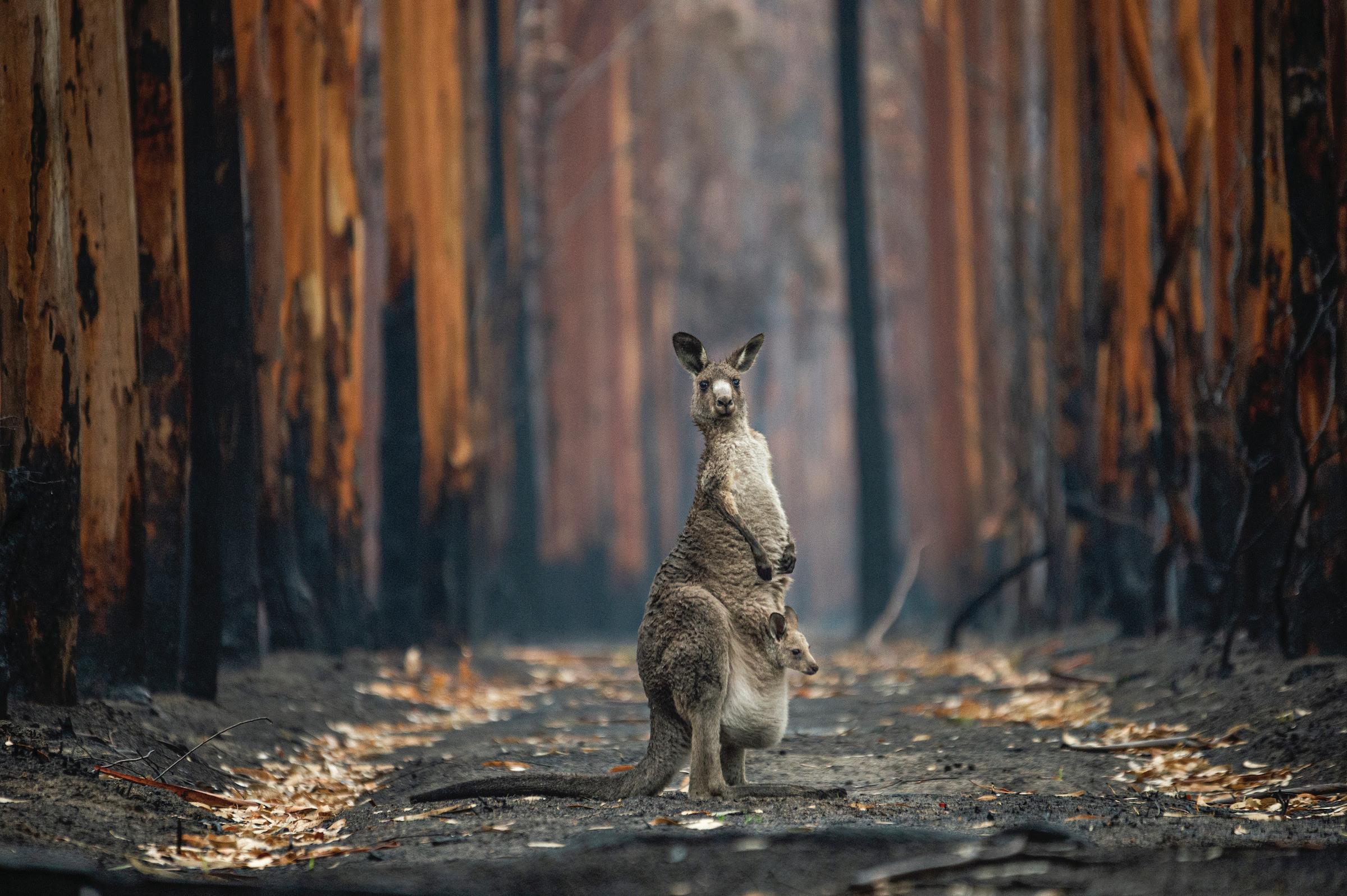
4 minute read
The Big Picture 2021
The Big Picture
From the beautiful to the bizarre, this photographic showcase of life on Earth shines a light on some of our planet’s most amazing species and places.
BY STEVEN BEDARD
Each year, the California Academy of Sciences’ renowned BigPicture Photography Competition celebrates some of the world’s best photographers and the year’s most striking images.
Judged by an esteemed panel of nature and conservation photography experts, including Suzi Eszterhas, Morgan Heim, and bioGraphic contributing photo editor Sophie Stafford, the competition’s winning images and finalists highlight Earth’s biodiversity and illustrate the many threats that our planet faces.
Each photo, in its own way, inspires viewers to protect and conserve the remarkable diversity of life on Earth. Below, we present the winners and some of our personal favorites from this year’s competition.
Bushfires have ravaged the Australian landscape in recent years, burning some 17 million hectares (42 million acres) in 2019 and 2020 alone. Driven by record-setting droughts and temperatures, wildfires have devastated habitats and wildlife populations alike, and scientists are worried that these events will only grow more common with climate change. Despite the sobering trend, conservationists remain committed to protecting the places and species that make this island nation unique.
In January of last year, shortly after a devastating bushfire near Australia’s southeast coast, photographer Jo-Anne McArthur accompanied one such effort, as a team from an organization called Vets for Compassion searched a eucalyptus plantation for injured and starving koalas (Phascolarctos cinereus).
There she encountered this female eastern grey kangaroo (Macropus giganteus), a joey in her pouch, that had somehow survived the cataclysm. For McArthur, it was a powerful moment: two of Australia’s most iconic species—the kangaroo and the eucalyptus tree—standing at a worrisome crossroads in their history. But the individuals in her frame were also symbols of hope, that life can persist against all odds.


Though a post-pandemic world is finally in sight, the scars of COVID-19 will live on for years to come— including those on our environment. Since the start of the pandemic, the production of single-use plastics has skyrocketed, largely driven by the surge in epidemiologically necessary but ecologically devastating personal protective equipment.
According to one study, 129 billion face masks and 65 billion gloves were used globally each month during the pandemic, as much as 75 percent of which are likely to end up in landfills or the ocean. Much of that equipment— including this mask being investigated by a curious California sea lion (Zalophus californianus)—is made from durable plastics that take hundreds of years to break down. However, if the past year has shown us anything, it is that all can be accomplished through resources and resolve. Perhaps a new picture of our approach to single-use goods will soon emerge.

Common ravens (Corvus corax) usually mate for life, and this intimate, openbeaked moment captured by photographer Shane Kalyn is likely an example of allopreening—reciprocal grooming that serves both to solidify social bonds and to keep plumage clean. Tender as this behavior is, it sometimes puts the birds at risk of an aggressive intervention from other members of their species.
A 2014 study by scientists at the University of Vienna revealed that ravens will often interrupt grooming sessions between other paired individuals, especially those with more tenuously established bonds. These interventions are an apparent attempt to prevent neighboring couples from developing the kinds of strong pair bonds that lead to greater reproductive success.
As scientist Kaeli Swift notes, “embracing the results of this study requires accepting the idea that an animal, especially a bird, is capable of putting future rewards ahead of current risk or losses. As humans, this kind of future planning is an ability we take for granted, but it’s quite a cognitive feat.” For birds with a documented ability to use tools and solve puzzles, it’s just one more impressive feat to add to the list.
Dancing in the glow of photographer Sarang Naik’s flashlight, a golden plume of spores rises from the gills of a mushroom cap outside of Toplepada, India. In due time, this magical pixie dust will create more mushrooms—and not only in the way that you might think.
While a small number of these mighty motes will land on soil suitable enough for producing the branching underground filaments that beget new mushrooms, many more spores will find their way into the atmosphere to serve an equally important purpose. Each year, millions of tons of fungal spores are aerosolized into the atmosphere where they provide the solid core for the condensation of water into clouds and rainfall, breathing life into forests around the world and sustaining future generations of fungi.
This cycle can go both ways, however. As droughts worsen with climate change, fewer mushrooms will spring up, which in turn lessens spore-spurred rains, which may then lead to more intense droughts in the future.

Read more at https://issuu.com/rareluxuryliving/docs/troora_san_francisco_2021_pages/480










